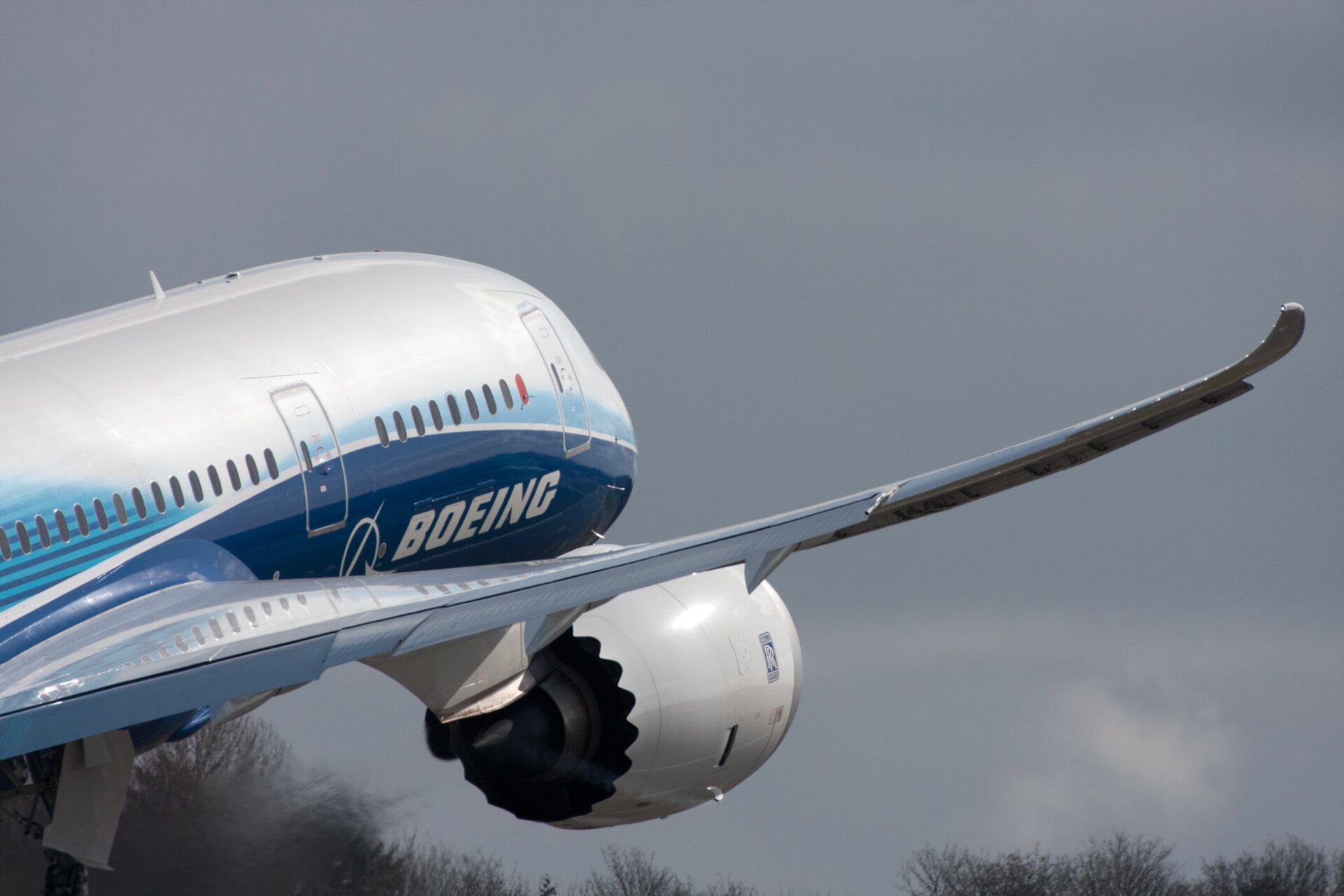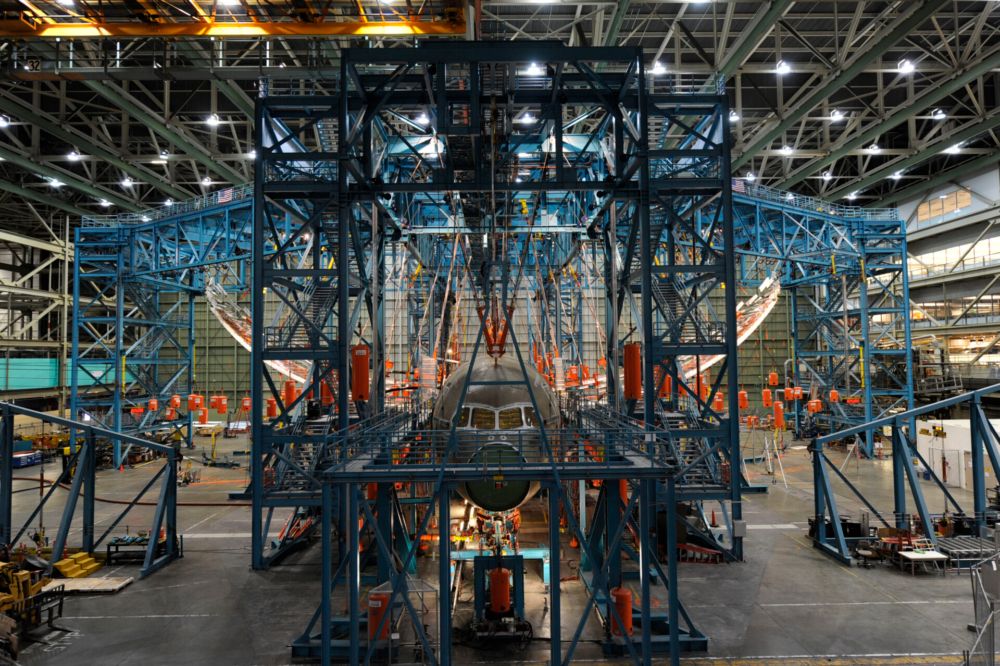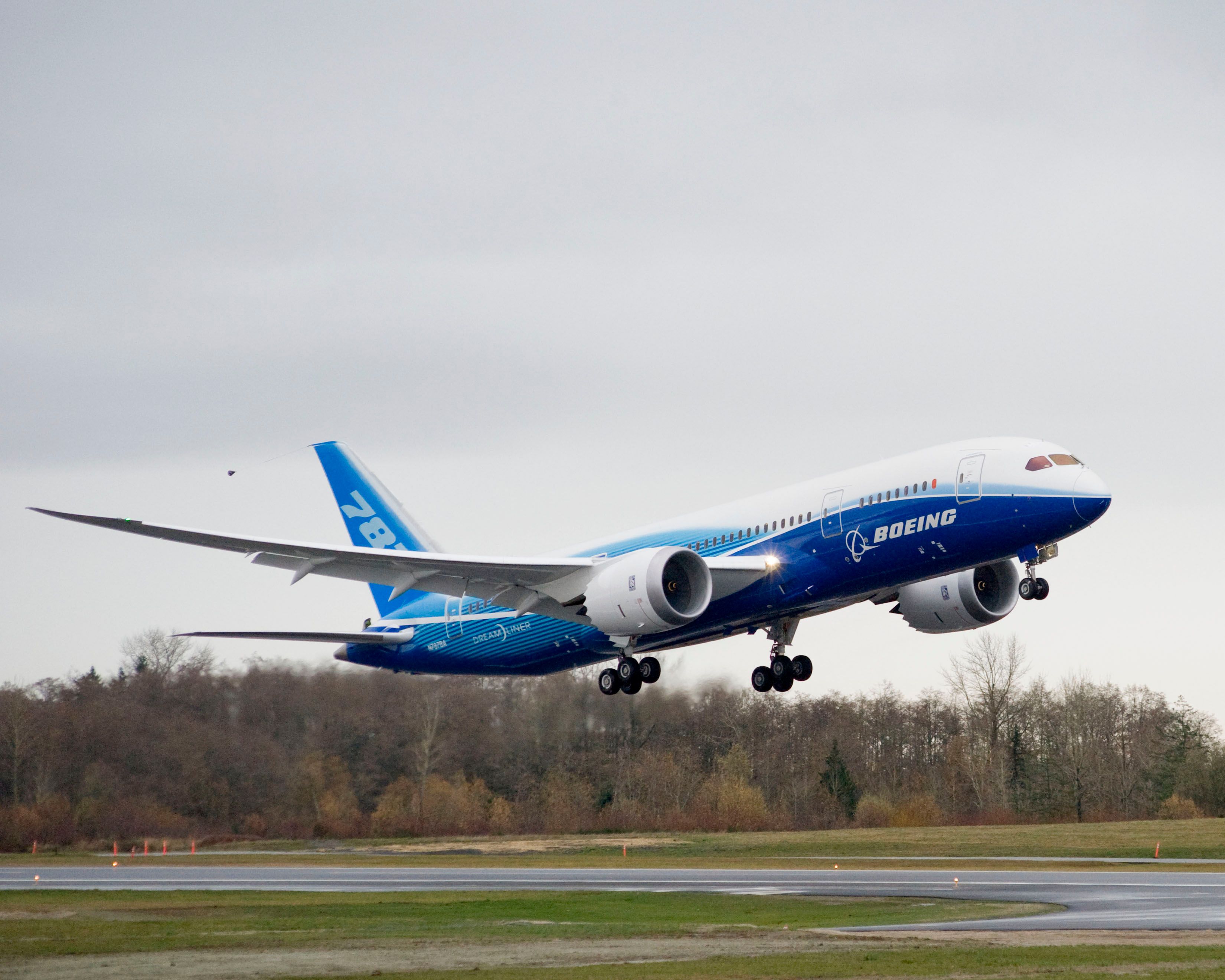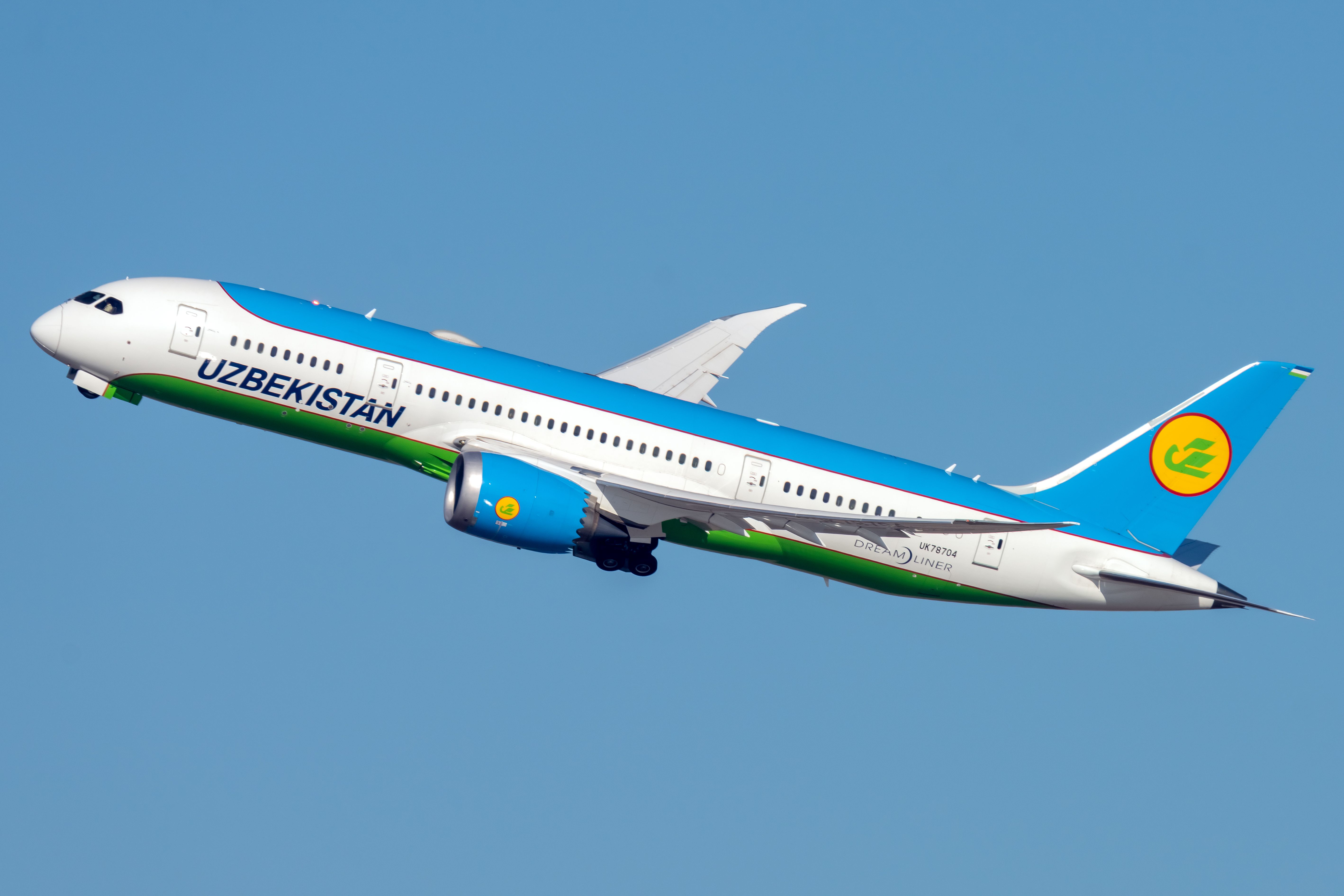Made possible with the use of carbon fiber material, the Boeing 787 Dreamliner's wings have an incredible amount of flexibility. This flexibility allows load changes and wind gusts to be dampened, resulting in an overall smoother, less turbulent ride for passengers. But just how much can these wings flex?
Extreme testing results
In March 2010, Boeing completed its spectacular "ultimate-load wing-up bending test." In this test, Speed News notes that extreme loads were applied to the airframe, replicating 150% of the most severe forces an aircraft could expect to encounter in service. Wired notes that the test aircraft was essentially built to be "tortured on the ground and never fly." So what was the result of this extreme test?
Subjecting the Boeing 787's wing flexibility to near extremes, Boeing flexed the Dreamliner's wings upward by approximately 25 feet (7.6 meters) during the test. A video of this extreme test can be seen below:
With this number being on the extreme end of the Dreamliner wing's flexibility, we can safely say that typical flights with this type of aircraft (and essentially every other commercial jet) will experience much less flex. Even if the flex is much less, it's an amazing sight to see, as Simple Flying photographer Vincenzo Pace can attest to - especially when these birds are banking on the Canarsie Departure.
Stay informed: Sign up for our daily and weekly aviation news digests.
Made possible by composite materials
The flexibility of the 787's wings is made possible with the use of composite materials, including CFRP, or carbon fiber reinforced polymer (CFRP). Boeing notes that approximately 50% of the Dreamliner's wings comprise this composite material. Not only are wings more flexible, leading to a smoother ride, but they are also lighter- resulting in less fuel burn and greater efficiency, as Boeing explains:
"[Composite materials] allow a lighter, simpler structure, which increases airplane efficiency, reduces fuel consumption and reduces weight-based maintenance and fees. They do not fatigue or corrode, which reduces scheduled maintenance and increases productive time."
The airline industry is always full of new developments! What aviation news will you check out next?
A smooth ride
The 787's wing flexibility isn't just incredible to watch. Indeed, this aspect is also a massive benefit for passengers, and particularly welcome among those more prone to sickness caused by a bumpy ride. Analyzing various factors, including wing loading, gust alleviation, and wing flex, turbulence forecasting website Turbli crowned the Boeing 787-9 as the best aircraft to handle turbulence.
Turbli notes that the aircraft features one of the largest wing loading ratios for commercial aircraft: 750 kg per square meter. Wing loading is the total mass of the plane divided by the wing's surface area. "For comparison, the wings can take twice much weight per square meter than those of an Embraer ERJ-175," it adds.
Add to this the 787's incredible flex (an aspect ratio close to 11) and an advanced gust alleviation system, and passengers can keep the air sickness bag neatly tucked away in the seat pocket. This is likely a factor in its popularity.
A much-loved design
But how popular exactly is the Dreamliner? A quick look at data from ch-aviation.com spells this out plainly, with the aircraft clearly being a favorite all over the world. The website notes that 870 examples are presently active, with a further 137 inactive examples allowing the number delivered to exceed the 1,000 mark.
Of the active examples, more than half are accounted for by the mid-size 787-9 variant, with 484 aircraft across 47 operators. Meanwhile, there were also 319 active 787-8s and 60 active 787-10s in the world at the time of writing. The missing examples are accounted for in the form of 4 private 787-8s and 3 private 787-9s.
What do you make of the Boeing 787? Have you ever noticed its wing flex while flying on one? Let us know your thoughts and experiences in the comments!
Sources: Speed News, Turbli, Wired





